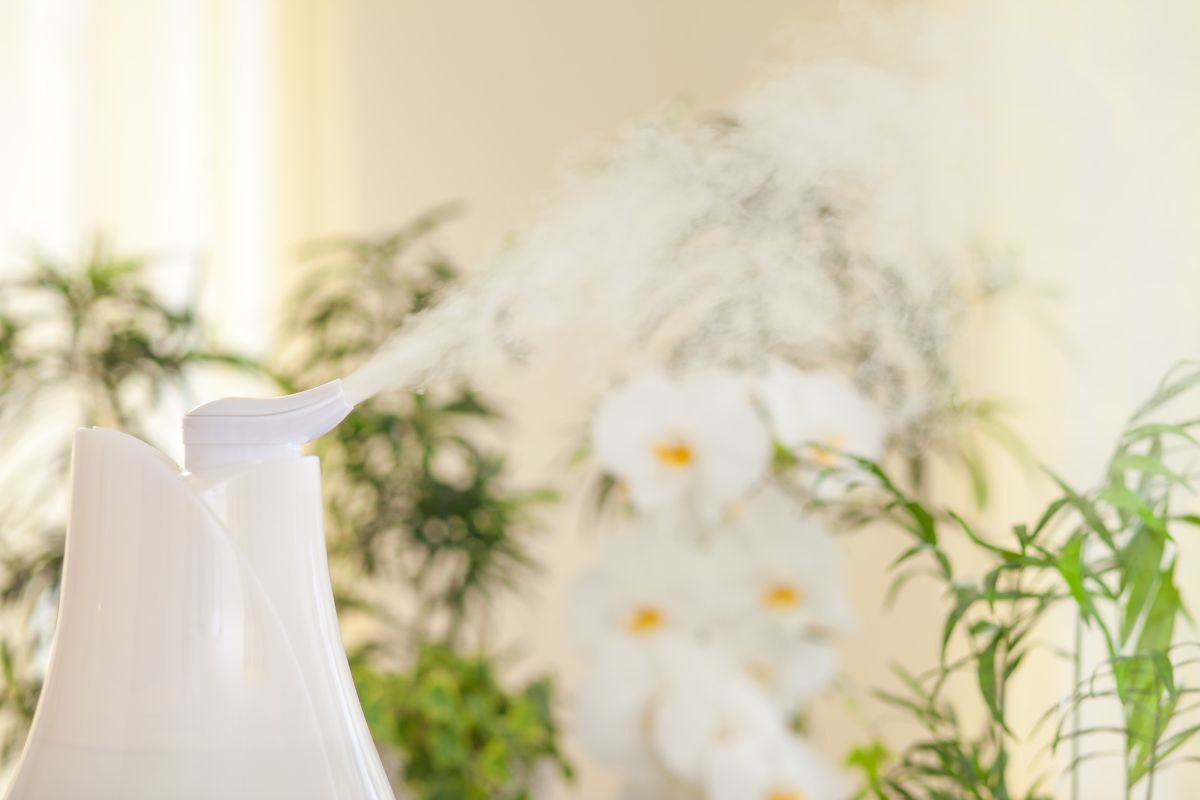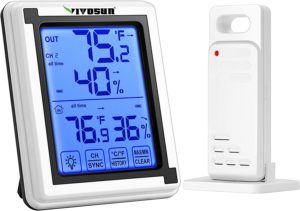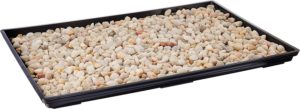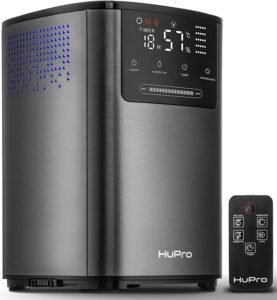Most plants thrive in humid conditions. Humidity, however, is not common in an indoor environment. A humidifier can be a useful tool to increase humidity around your plants, but where do you place a plant humidifier for the perfect jungle-esque humidity conditions?
In this article, I’ll give you step-by-step instructions for using a humidifier for plants, as well as tips for finding the right placement and humidity levels for your specific plant species.
I’ll also share other ways to increase humidity and the potential harm that can come from using a humidifier incorrectly. 😱
Understanding tropical climates
Tropical regions are known for their hot, humid environments, with average temperatures hovering around 65 degrees Fahrenheit (18 degrees Celsius). This humidity is largely due to the high evaporation rate caused by high temperatures, which leads to a lot of water vapor rising into the lower atmosphere.
In the late afternoon, when enough moisture has accumulated in the air, this can result in steady rain showers depending on the time of year and wind patterns. Naturally humid areas provide more moisture to the plants, which can be absorbed through aerial roots or even the leaves of some plants.

The average humidity levels in tropical climates can vary depending on various factors such as the location, time of year, and altitude. In general, tropical regions are characterized by high humidity levels, with relative humidity often hovering around 80% or higher. However, the humidity levels can fluctuate throughout the day and may be lower in the morning and higher in the afternoon and evening due to the influence of temperature and other factors.
It’s worth noting that the specific humidity levels in a given tropical region can vary significantly, so it’s important to research the humidity conditions in a specific location if you are planning to grow plants from there. We made a plant hardiness map to help you do that 😊
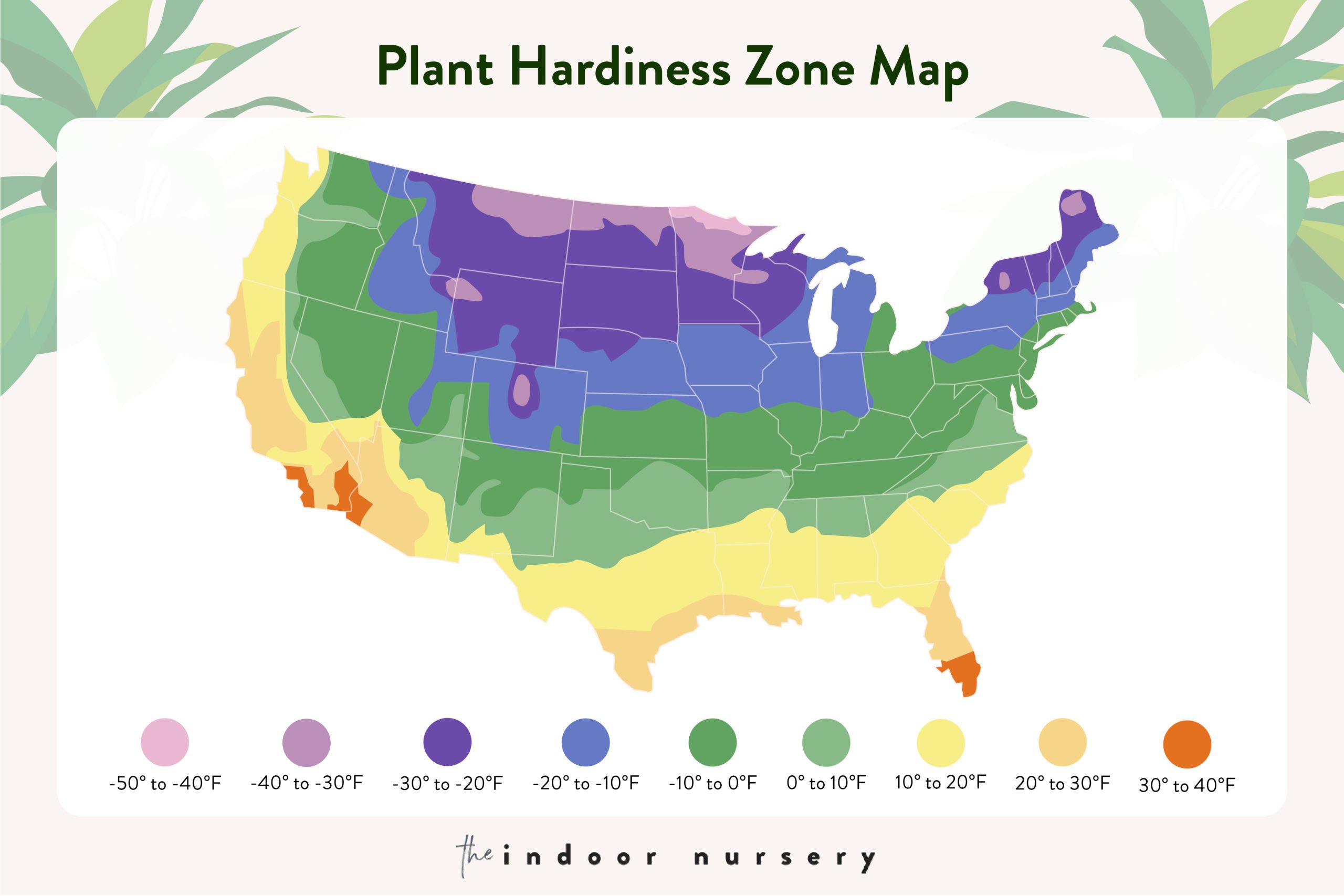
Most houseplants prefer a humidity level between 40-70%. However, some plants may have slightly different humidity requirements. For example, ferns, orchids, and some tropical plants generally prefer a higher humidity level of around 60-80%. On the other hand, succulents and cacti prefer a lower humidity level of around 20-30%.
Recreating these conditions can be difficult, especially if you live in an area with extreme weather or dry air.
That’s where a plant humidifier comes in handy – it allows you to replicate a tropical environment for your indoor plants, regardless of where you live.
Humidifier placement for plants
A humidifier can help increase the humidity around indoor plants, which can be beneficial for certain plant species that prefer a more humid environment. However, it’s important to use a humidifier cautiously, as too much humidity can also be harmful to some plants and cause fungal diseases or attract pests (yuck! 🤢).
It’s generally a good idea to monitor the humidity levels around your plants and only use a humidifier if the humidity falls below a certain level that is recommended for the specific plant species you are growing.
Homes that use an air conditioner or heater during winter tend to have quite dry air, which can be harmful for many plants, especially the tropical plants that indoor gardeners love. (🙋) A small humidifier to keep relative humidity levels high can make a big impact.
Here are a few tips for plant humidifier placement:
- Do not place humidifier in corners. Corners do not have great air flow and tend to trap moisture on the walls behind the humidifier when placed in the corner, which can lead to dank mold issues (and poor indoor air quality!).
- Place humidifier about 3-5 feet away from the plants. You want to keep general indoor humidity levels up, not shower your plants! Since humidifiers add moisture to the air, it’s best to keep the humidifier a few feet away from plants so that the moisture can settle on the plant leaves.
- Keep humidifier out of direct sunlight. Keep the humidifier out of sunlight, which can cause algae, bacteria, or mold growth in the water tank. On that note, be sure to clean the water tank out and remove any scale buildup periodically, according to the manufacturer’s instructions.
How close to put humidifier to plants
When using a humidifier with indoor plants, place the humidifier about 3-5 feet away from the plants. This distance allows the humidifier to effectively increase the humidity around the plants without causing the humidity to become too high.
IMPORTANT: Make sure there is ample air circulation in the room to reduce mold growth and provide fresh air to plants (yes, they breathe like us!)
Air circulation is important when using a humidifier for plants because it helps to evenly distribute the humidified air throughout the room or area where the plants are located. Without adequate air circulation, the humidified air may not reach all of the plants evenly, which can result in some plants getting too much humidity in some areas.
This can lead to problems such as fungal diseases, pests, and other issues that can affect the health of the plants. In addition, good air circulation helps to prevent stagnant air, which can be harmful to plants and can promote the growth of harmful fungi and bacteria. (Read about my experience with mold growth on soil 🙈)
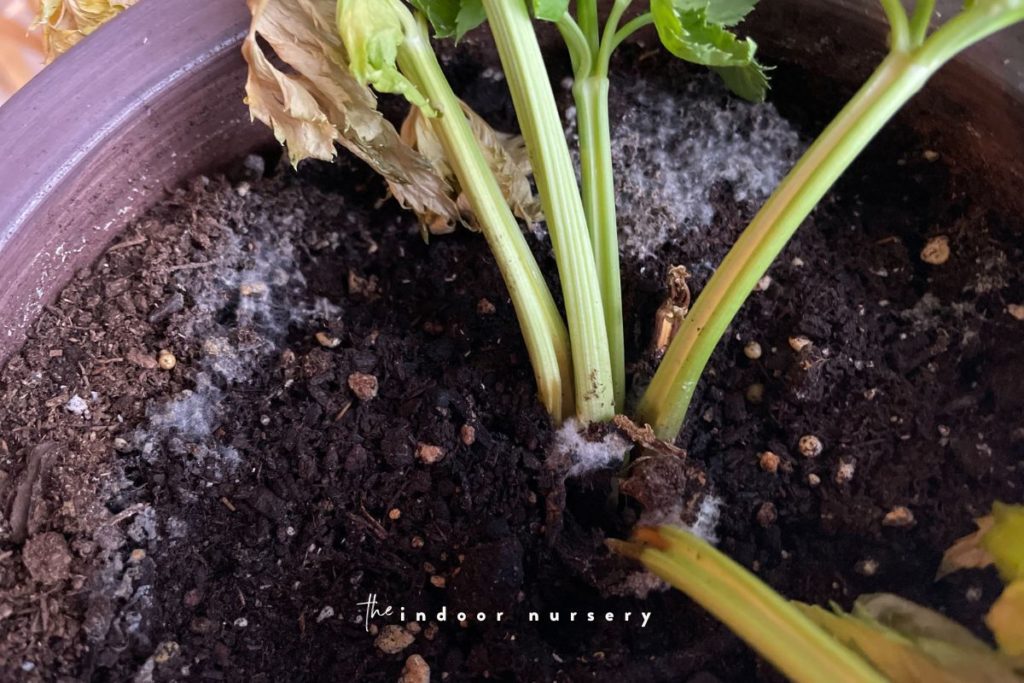
By ensuring that there is good air circulation when using a humidifier for plants, you can help create a healthy and comfortable environment for your plants to thrive.
I like to keep either the ceiling fan on or have a small fan in an out-of-the-way area to keep air circulating.
How to use humidifier for plants
Using a humidifier for your plants is pretty straight forward. Here are the steps for using a humidifier with indoor plants:
- Choose a humidifier that is suitable for the size of the room or area where you will be using it.
- Fill the humidifier with filtered or distilled water according to the manufacturer’s instructions.
- Place the humidifier in a location that is near your plants, but not too close. A good rule of thumb is to place the humidifier about 3-5 feet away from the plants. Avoid placing it in the corner of the room.
- Plug in the humidifier and turn it on.
- Set the humidity level on the humidifier to the desired level. You can use a hygrometer to measure the humidity in the room and adjust the humidifier accordingly.
- Monitor the humidity levels around your plants regularly to make sure they are not getting too much or too little humidity.
- Empty and refill the water in the humidifier as needed. It’s generally a good idea to clean the humidifier according to the manufacturer’s instructions to keep it in good working order.
- Use the humidifier as needed to maintain the desired humidity level for your plants.
In general, humidifiers are most beneficial for tropical plants that prefer a more humid environment, such as ferns, orchids, and bromeliads.
However, some other types of plants may also benefit from the use of a humidifier, especially if the air in your home is very dry.
It’s a good idea to research the specific humidity requirements for the plants you are growing and adjust the use of your humidifier accordingly.
Other ways to maintain humidity
Here are some other ways to increase humidity around indoor plants:
- Grouping plants together: By grouping plants together, you can create a microclimate that is more humid than the surrounding air. This is because the plants release water vapor through a process called transpiration, which increases the humidity around the plants.
- Using a pebble tray: A pebble tray is a tray filled with pebbles and water that is placed under a plant pot. As the water evaporates, it increases the humidity around the plants.
- Mist the plants regularly: Misting the plants with a spray bottle can help increase the humidity around them. Just be sure not to overdo it, as too much moisture can lead to problems such as fungal diseases.
- Use a humidifier: As mentioned earlier, a humidifier can be a useful tool for increasing the humidity around indoor plants.
- Keep plants away from drafts: Cold drafts, such as those from open windows or air conditioning vents, can lower the humidity around plants. To increase humidity, try to keep plants away from these types of drafts.
It’s important to note that while these methods can be helpful for increasing the humidity around indoor plants, it’s still important to monitor the humidity levels regularly and make sure they are within the recommended range for the specific plant species you are growing.
Are humidifiers good for plants?
Humidifiers can be beneficial for indoor plants in certain situations. For example, if the air in your home is dry due to heating or air conditioning, a humidifier can help increase the humidity around your plants. This can be especially beneficial for tropical plants that prefer a more humid environment!
However, it’s important to use a humidifier cautiously, as too much humidity can also be harmful to some plants. As I’ve said before, it’s generally a good idea to monitor the humidity levels around your plants and only use a humidifier if the humidity falls below a certain level that is recommended for the specific plant species you are growing.
Warm mist humidifier vs cool mist humidifier
Luckily, there are humidifiers that do it all 😉 I’ll go through what each type of humidifier is, how it works, and what the drawbacks are. Then I’ll share my favorite humidifier for all of these settings!
Warm mist humidifiers produce a warm, visible mist by heating water to a boil and releasing the steam into the air. These humidifiers are generally quieter and may be less drying to the skin and respiratory system than cool mist humidifiers. However, they may be less energy efficient and may be more expensive to operate due to the need to heat the water.
Cool mist humidifiers, on the other hand, produce a cool, invisible mist by using a fan to blow air through a wet wick, filter, or other material. These humidifiers are generally more energy efficient and may be less expensive to operate than warm mist humidifiers. However, they may be noisier and may be more drying to the skin and respiratory system.
An ultrasonic humidifier is a type of humidifier that uses high-frequency vibrations to create a fine mist of water that is dispersed into the air. These vibrations are produced by a small, piezoelectric transducer that is located inside the humidifier. When the transducer vibrates at a high frequency, it creates tiny water droplets that are suspended in the air.
I recommend something like this:
To use an ultrasonic humidifier, you simply fill it with water and turn it on. The transducer will begin vibrating, creating the mist of water droplets that is dispersed into the air. Some ultrasonic humidifiers also have a built-in fan that helps to blow the mist into the surrounding environment.
One of the main advantages of ultrasonic humidifiers is that they are generally very quiet and energy efficient. They are also relatively easy to maintain, as they do not have any filters or other parts that need to be replaced on a regular basis. However, it’s worth noting that some people may be sensitive to the minerals and other impurities that can be present in tap water, and these impurities can be dispersed into the air along with the mist from an ultrasonic humidifier. To mitigate this, you can use distilled or purified water in your ultrasonic humidifier to help reduce the amount of minerals and impurities that are dispersed into the air.
Final thoughts on where to place humidifier for plants
By following the steps outlined in this article and using other methods—such as grouping plants together, using a pebble tray, misting the plants, and keeping them away from drafts—you can help create a comfortable and healthy environment for your indoor plants to thrive.
Just remember to research the specific humidity requirements for the plants you are growing and adjust your use of a humidifier accordingly. Happy plant care!
more about humidity
- The 6 Best Dehumidifiers For Grow Tents
- 7 Best Hygrometers For Indoor Plants
- 9 Best Plant Humidifiers For Indoor Jungle Vibes
- The best grow tent humidifier for indoor gardening
- How to increase humidity in a room with indoor plants
- How to fix low humidity leaf curl for humid-loving plants
- Where to place humidifier for plants (farther than you think)

